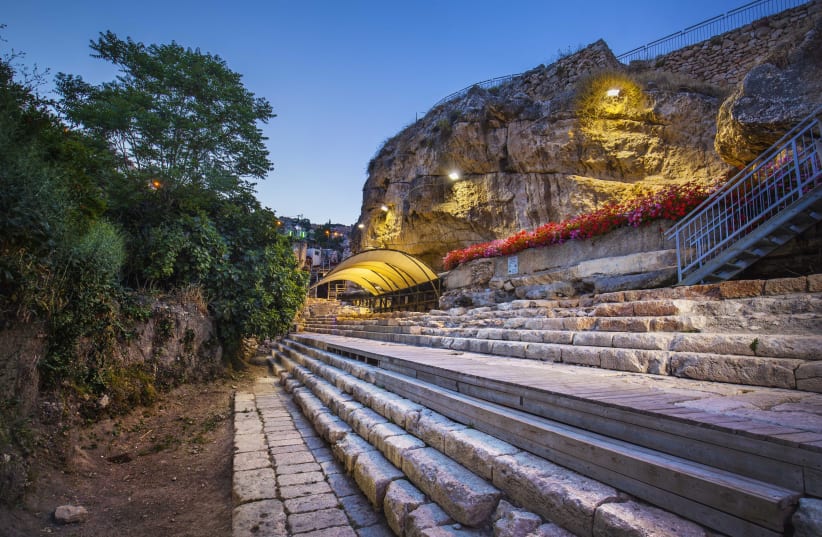The City of David Foundation will begin excavating the Pool of Siloam and open it to the public, the Antiquities Authority announced on Tuesday.
The Pool of Siloam is an archaeological and historical site within the City of David which was part of the Jerusalem water system during the reign of King Hezekiah and was constructed some 2,700 years ago.
The pool served as a reservoir for the Gihon Spring from which water was diverted and stored in underground tunnels. Some archaeologists believe that it was used as a ritual bath (mikveh) for pilgrims to purify themselves before continuing to visit the Temple.
In 1880, an inscription written in ancient Hebrew recording how the water was diverted to the pool from the Gihon Spring was discovered at the site and is currently located at the Istanbul Archaeology Museum. The inscription dated back to the times of Hezekiah.
The IAA's plans for the excavations
Over time, the Pool of Siloam became a target for research and excavations by archaeologists around the world, but the IAA’s excavation aims to fully expose the pool for the first time since it was built.
Throughout the excavations, visitors will be able to see the site and the progress being made in exposing it. The Pool of Siloam will be added to a route that begins in the City of David and ends at the footsteps of the Western Wall.
“The Pool of Siloam in the City of David National Park in Jerusalem is a site of historic, national and international significance,” said Jerusalem’s Mayor Moshe Lion. “After many years of anticipation, we will soon merit being able to uncover this important site and make it accessible to the millions of visitors visiting Jerusalem each year.”
